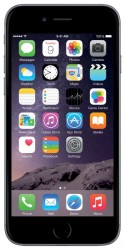

The A9 system-on-chip was dual-sourced from TSMC and Samsung. While the capacities of their non-user-replaceable batteries are slightly smaller (1715 mAh and 2750 mAh respectively), Apple rates the iPhone 6S and 6S Plus as having the same average battery life as their respective predecessors (1810 mAh and 2906 mAh). The Touch ID sensor on the 6S was also updated, with the new version having improved fingerprint scanning performance over the previous version. The iPhone 6S has 2 GiB of RAM, twice as much as any previous iPhone, and also supports LTE Advanced. The iPhone 6S is powered by the Apple A9 system-on-chip, which the company stated is up to 70% faster than Apple A8, and has up to 90% better graphics performance. Alongside the existing gold, silver, and space gray options, a new rose gold color option was also introduced. In response to the “bendgate” design flaws of the previous model, changes were made to improve the durability of the chassis: the 6S was constructed from a stronger, 7000 series aluminum alloy,] “key points” in the rear casing were strengthened and reinforced, and touchscreen integrated circuits were re-located to the display assembly. The iPhone 6S is nearly identical in design to the iPhone 6. The devices are part of the iPhone series and were announced on September 9, 2015, at the Bill Graham Civic Auditorium in San Francisco by Apple Inc.

The iPhone 6S and iPhone 6S Plus are smartphones designed by Apple Inc.


 0 kommentar(er)
0 kommentar(er)
